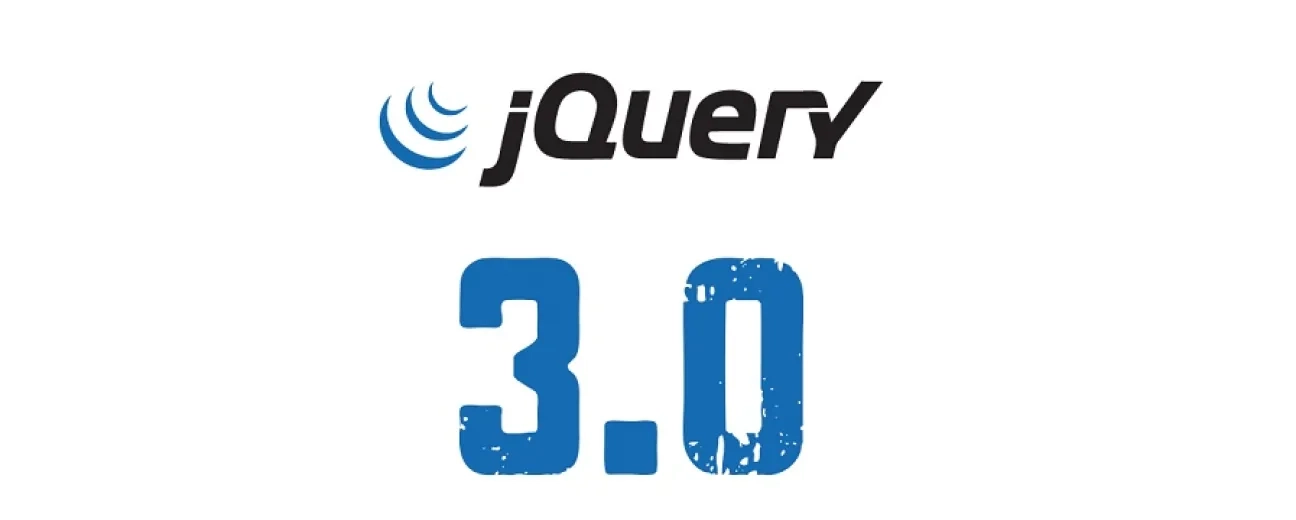
We’re excited to hear your project.
Let’s collaborate!

Since jQuery’s initial release more than eight years ago, it has grown in popularity among web developers and clients alike – nowadays jQuery is considered to be the foundation of the modern Web. In these past eight years the cross platform library was bundled with countless developer tools, sites and of course, with JavaScript. Now it’s time for jQuery 3.0.
jQuery 3.0 was just released – this version of jQuery has been in planning since October 2014. jQuery 3.0 is a much faster, slimmer version of the old one with great attention given to compatibility. All the old IE workarounds have been removed and more powerful modern API’s were implemented.
Upgrading to 3.0 is relatively easy and jQuery even released a neat little guide which you can follow. Not only that but with the use of jQuery’s Migrate 3.0 plugin you’ll be able to see any compatibility issues in your project or code.
In the future you won’t really have to use AJAX, you’ll simply be able to use a standalone library that focuses on AJAX requests or a combination of class manipulation and CSS for web animations. The 3.0 version also features a slim version which removes all AJAX and effects modules – this version also excludes any deprecated code. Web developers are of course able to include or exclude any modules they want, thanks to the custom build API used by jQuery 3.0.
Since it’s a very fresh release, there are a few necessary tweaks which will be made in the following months – jQuery Mobile and UI currently have some issues.
The old workarounds and hacks for IE9 got removed in order to make jQuery 3.0 sleeker and faster. If you still need support for IE 8 you’ll just have to use the 1.12 release because versions such as 2.0 don’t offer full support for older versions of Internet Explorer.
Since most browsers supported by jQuery 3 also support strict mode the new release has been built with it in mind. Your personal code is not actually required to run in strict mode and you don’t need to rewrite your existing code if you want to migrate to version 3.0. Strict mode can work with non strict mode and vice-versa – the only exception is related to some versions of ASP.NET.
The request AnimationFrame() API is now used for animations, thus making them much faster and smoother. jQuery 3.0’s new API is only used with browsers that fully support it – other browsers such as IE9 will use the older API in order to display animations.
The jQuery.escapeSelector() method allows web developers to escape characters or string that have a different meaning in CSS in order to use them in a jQuery-selector. Example:
„If an element on that page has an id of „abc.def”, it cannot be selected with $(„#abc.def” ) because the selector is prased as „an element with id ‚abc’ that also has a class ‚def’. However, it can be selected with $(„#” + $.escapeSelector( „abc.def”) ).”
Although jQuery 3.0 doesn’t fully support SVG, the methods that manipulate CSS class names such as .hasClass() and .addClass() can be used for SVG documents. Web developers are now able to find and modify classes with jQuery in SVG then style these classes with CSS.
JavaScript Promises are a special type of objects usually used for asynchronous computations – these have been standard in ECMAScript 6 and their features and behaviours are specified in the Promises/A+ standards.
In the new version of jQuery deferred objects are compatible with the Promises/A+ standards. Deferreds are also chainable objects, which means it’s possible to create callback queues.
With the new release of jQuery the asynchronous callback functions executions are changed – Promises allow web developers to write asynchronous code that is more similar in logic to synchronous code.

We’re excited to hear your project.
Let’s collaborate!